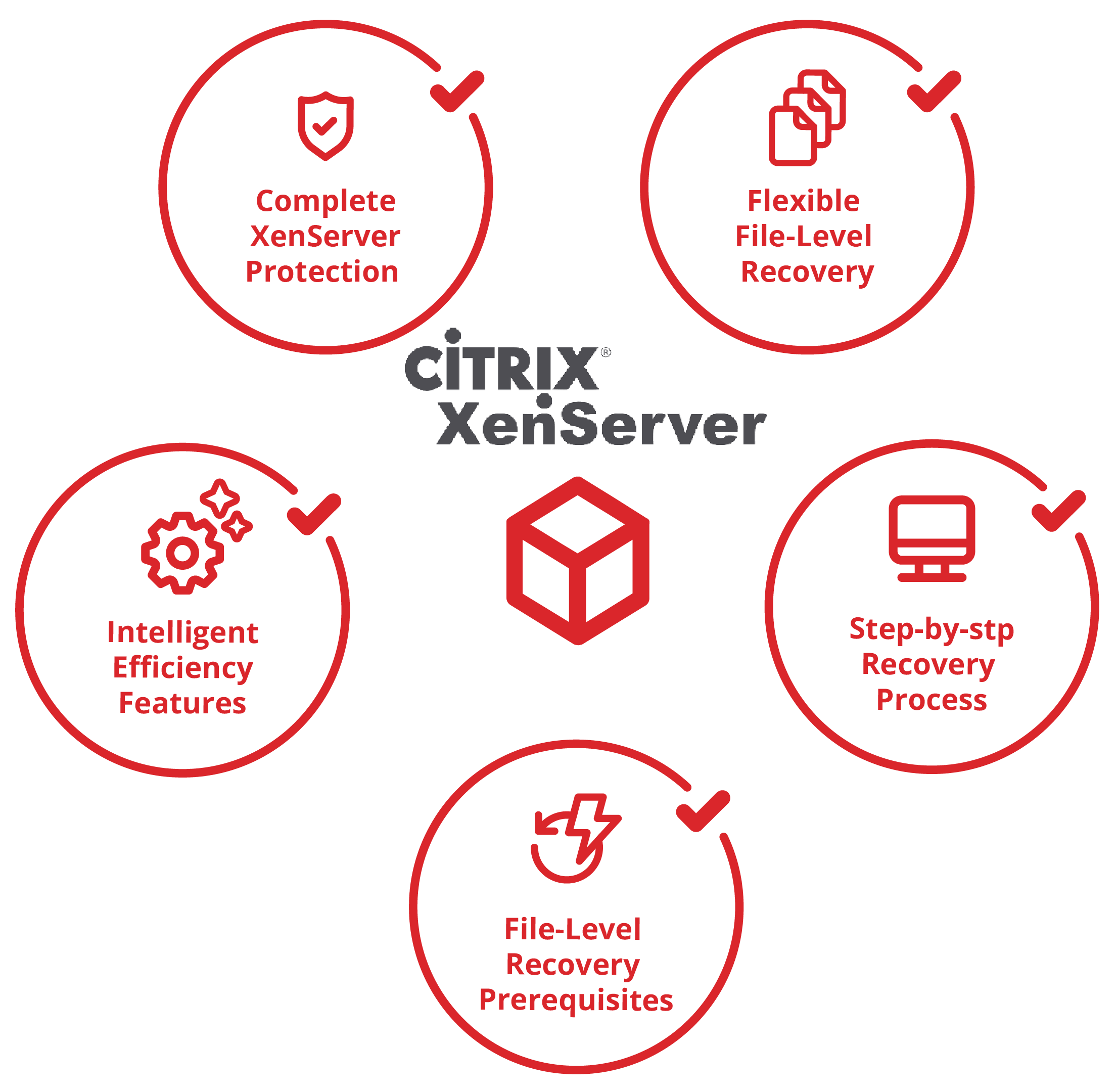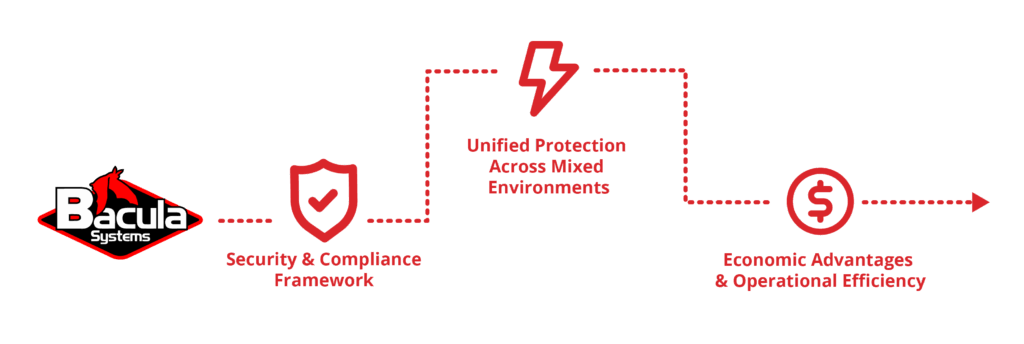Frequently Asked Questions
Can I perform incremental backups of XenServer VMs?
Yes, Bacula Enterprise supports Full, Differential, and Incremental backups at the block level through Changed Block Tracking (CBT) technology. The plugin maintains lightweight snapshot metadata (typically 4MB) that tracks changes in 64KB blocks across VM disks. Only modified blocks are transferred during incremental or differential backups, significantly reducing backup windows and storage consumption.
Does Bacula support both Citrix Hypervisor and XCP-ng?
Yes, Bacula Enterprise’s Xen plugin is fully compatible with both Citrix Hypervisor (formerly XenServer) and XCP-ng platforms. The plugin utilizes the standard XenAPI (XAPI) and Network Block Device (NBD) protocols that both platforms share. VMs can be backed up on one platform and restored to the other, providing flexibility for migrations or disaster recovery scenarios.
Can I back up VMs while they’re running?
Yes, Bacula performs online backups of XenServer VMs regardless of their power state – running or shut down. The plugin creates snapshots without interrupting production workloads. For Windows VMs with XenServer Guest Tools installed, quiescing can be enabled to create application-consistent snapshots that ensure data integrity for databases and enterprise applications.
Where can I restore XenServer VM backups?
Bacula provides three restore options: restore directly to a XenServer or Citrix Hypervisor pool as a new VM with selectable Storage Repository targets, export to a local directory as archive files for offline storage, or extract individual files through Single File Restore without recovering the complete VM. This flexibility supports scenarios from disaster recovery to compliance archiving to granular file recovery.
Can I select which VMs to back up using patterns or filters?
Yes, Bacula’s Xen plugin supports flexible VM selection through multiple methods: specify individual VMs by name-label or UUID, use regular expressions to include VMs matching patterns, or combine include and exclude expressions for complex filtering. This pattern-based approach enables dynamic backup configurations that automatically adapt as VMs are created or renamed according to your naming conventions.
Do I need to modify my configuration each time I add or remove a VM?
No, Bacula’s scanning and automation capabilities allow Xen plugin to be automatically configured and generate new backup routines automatically when new Virtual Machines are added to your environment, as well as disabling those referencing old instances that are not present anymore. Once the automation is first configured, it requires zero maintenance.








